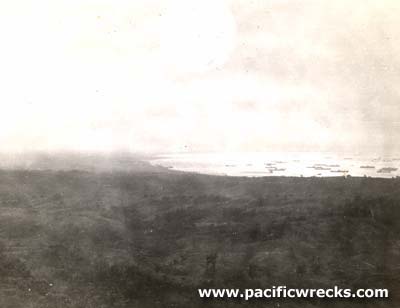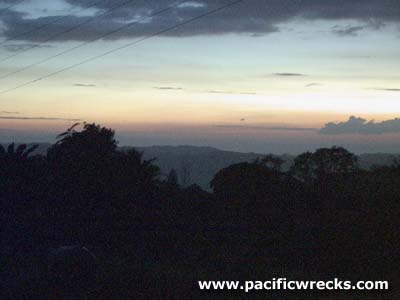|
|
|
|
| Missing In Action (MIA) | Prisoners Of War (POW) | Unexploded Ordnance (UXO) |
| Chronology | Locations | Aircraft | Ships | Submit Info | How You Can Help | Donate |
|
 IJA December 24, 1941  U.S. Army January 9, 1945  Carl R. Thien 1945  Justin Taylan 2003 |
Location Lingayen Gulf is located in northern Luzon in the Philippines. The northern edge connects to the South China Sea (West Philippine Sea). Borders Pangasinan Province to the south and west, and La Union Province to the east. Bordering the southern edge is Sual, Lingayen, Dagupan, San Fabian in the 4th District of Pangasinan Province. Bordering the eastern edge is Santo Tomas, Agoo, Vaba, Santiago and Bauang. During World War II, Lingayen Gulf was the site of amphibious landings by both the Japanese Army on December 22, 1941 and later the liberation U.S. Army on January 9, 1945. Wartime History On December 21, 1941 in the morning a Japanese trawler was observed off Bauang taking depth soundings then departs to the north. On December 22, 1941 between 1:10am to 4:30am a Japanese invasion force of warships escorting seventy-six transports with the Imperial Japanese Army (IJA) 14th Army under the command of Lt. General Masaharu Homma organized in three convoys enter Lingayen Gulf and anchors. The escorting cruisers and destroyers began a preinvasion bombardment as the soldiers are loaded into landing craft. At dawn, the Imperial Japanese Army (IJA) 14th Army under the command of General Masaharu Homma begins landing at three locations: Agoo, Caba and Bauang. The convoy from Takao (Kaohsiung) with the 47th Infantry (less one battalion), 4th Tank Regiment (less one company), and supporting elements was to land at Agoo, the southernmost landing. At 5:17am the first wave landed on the beach south of Agoo including two battalions of the 47th Infantry and one battalion of the 48th Mountain Artillery. Landing craft made ten trips to transport the entire force. During the Japanese occupation of the Philippines, Lingayen Gulf was used by Japanese shipping and defenses were established in anticipation that U.S. forces would land at the same location. Starting in late December 1944, Lingayen Gulf was targeted by American aircraft ahead of the planned landing. American mission against Lingayen Gulf December 28, 1944–January 8, 1945 During early January 1945 an Allied amphibious force entered Lingayen Gulf and began mine sweeping operations and shore bombardment ahead of the amphibious landing. Between January 4, 1945 to January 12, 1945 a total of 24 ships were sunk by Japanese kamikaze aircraft including USS Walke (DD-723), USS Long DD-209 and USS Hovey (DD-208 / DMS-11). In addition, 67 were damaged including USS Mississippi (BB-41), USS Colombia (CL-56), HMAS Australia a (D84) and USS Colorado (BB-45) was hit by friendly fire. On January 9, 1945 an Allied amphibious force landed the U.S. Army 6th Army begins landing along a 20 mile beachhead with XIV Corps landing to the west on "Orange Beach" at Lingayen, "Yellow Beach" at Binmaley and "Blue Beach" at Dagupan while I Corps landed to the east on "White Beach" at San Fabian. During the initial landing, 68,000 troops are landed. A total of 203,608 went ashore in the subsequent landings. In total, General Douglas MacArthur commanded of over 280,000 soldiers, a greater than the force commanded by General Dwight D. Eisenhower in Europe. Afterwards, Lingayen Gulf became an important Allied anchorage and logistical area to support the U.S. Army advance southward. P-38L Lightning 44-25455 Pilot Shannon MIA January 20, 1945 References U.S. Army in World War II - The Fall of the Philippines Chapter VIII: The Main Landings pages 123-144 Contribute
Information Last Updated
|
Map December 22-24, 1941 Map January 9-17, 1945 Map Lingayen Area 1945 Photo Archive |
| Discussion Forum | Daily Updates | Reviews | Museums | Interviews & Oral Histories |
|